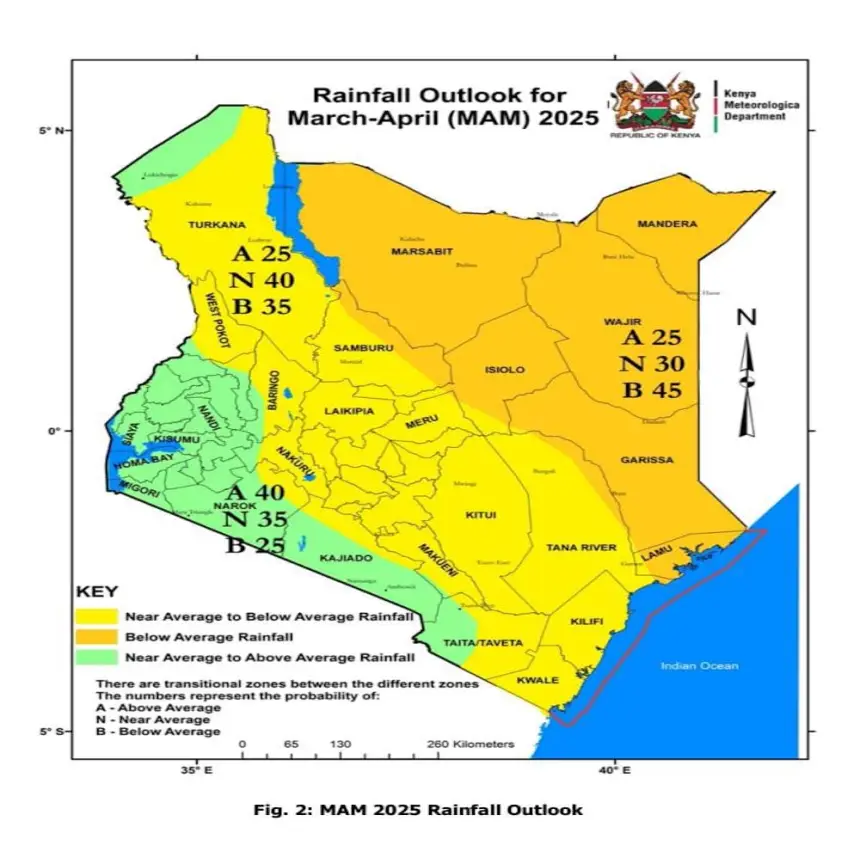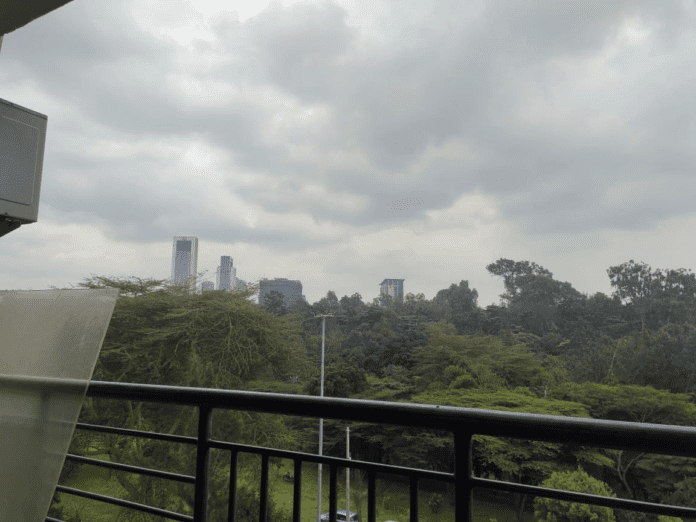Nairobi and parts of the highlands east of the Rift Valley, including Nyeri, are experiencing heavy rains due to the presence of the Intertropical Convergence Zone (ITCZ) over northern Tanzania and southern Kenya.
According to Kenya Meteorological Service Director Dr. David Gikungu, the ongoing downpour will subside by Friday, after which the country will continue with a dry spell leading into the March-May (MAM) long rains season.
Speaking at the conclusion of the 10th National Climate Outlook Forum (NCOF) in Garissa County, Dr. Gikungu noted that parts of Western Kenya and the Lake Basin region may continue receiving rain into the long rains season, which is expected to begin in late March.
“The MAM 2025 forecast indicates near to above-average rainfall over the Lake Victoria Basin, South Rift Valley, most of the Highlands West of the Rift Valley, southern parts of the southeastern lowlands, and the extreme northern parts of northwestern Kenya,” Dr. Gikungu explained.
However, near to below-average rainfall is expected in the Central Rift Valley, the Highlands East of the Rift Valley—including Nairobi—most of the Northwest, the Coastal region, and isolated areas in the western highlands. Below-average rainfall is also forecast for northeastern Kenya and the North Coast.
Dr. Gikungu urged relevant authorities to advise communities to conserve water and pasture as below-normal rainfall is expected in several regions.
“During the March-April-May long rains season, rainfall distribution is likely to be poor to fair in both time and space,” he warned, adding that the onset will be normal to late, with occasional dry spells and storms in some areas.
The peak of the rains is expected in April for most regions, except along the Coastal Strip, where the highest rainfall will occur in May.

Crackdown on Charcoal Burning in Garissa
Meanwhile, Garissa Deputy County Commissioner (DCC) Sebastian Okiring has directed the Kenya Forest Service (KFS) to take action against charcoal burners and sellers in Kitui, Tana River, and Garissa counties.
Okiring expressed concern over the large-scale destruction of trees for charcoal, warning that it threatens the ecosystem and biodiversity.
“As you travel from Mwingi to Garissa, charcoal bags dot every bus stop. Some of this charcoal comes from trees that have survived for over 100 years,” he lamented.
The DCC urged KFS to enforce the law to curb deforestation, calling for urgent intervention to protect the environment.
He also appealed to communities to maintain peace, especially during the dry season, when competition for resources can lead to conflict.
“When neighboring communities come in search of water and pasture, allow them,” Okiring urged, emphasizing the need for peaceful coexistence.
The Kenya Meteorological Department has warned that northeastern Kenya, including Garissa, will receive below-average rainfall during the MAM season, heightening concerns over resource scarcity in the region.







